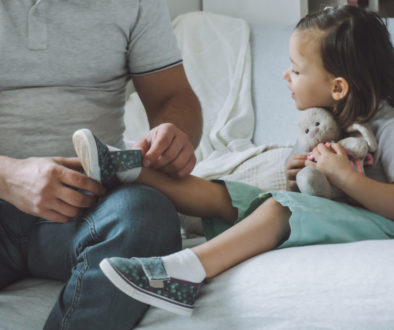Supporting Big Feelings

Emotions are a normal part of life. Every emotion plays an important role in our lives, even anger, which can be one of the more difficult feelings to process. Anger and explosive behaviors are a coping mechanism to help alleviate the feelings of powerlessness and to numb feelings of sadness, pain, fear, hurt or disappointment, that have become overwhelming.
As adults, we understand that emotions are complex, but for children, this complexity of big feelings can feel overwhelming. Childhood expression of feeling overwhelmed and frustrated is different than adults because children lack the language to process those complicated emotions. Often, it is expressed through outbursts, tantrums, and difficulty calming down. Although these behaviors can be challenging for caregivers, it is helpful to understand that these responses to big emotions are a normal part of your child’s learning experience in identifying and expressing their feelings.
For children, behavior is communication. They don’t yet have the skill of impulse control, self-regulation, or the ability to effectively communicate (or even understand) what they are feeling. Because of this, kids are even more prone to lashing out when they are angry. As adults, it is our job to help give children language to their feelings and to accept their emotions (but not always the behavior), even the big ones.
Here are a few tips to help support your child in learning better ways to express their feelings:
Be Empathetic: When parents accept and empathize with their child’s feelings, it teaches them that emotions are normal. One of the best ways to build connection is through empathy, as it strengthens your relationship with your child, helps you understand them better, and helps them feel understood. “It is so frustrating when your sister takes your things without asking.”
Stay Calm: Staying calm when a child is upset, gives them a safe space to learn the emotional skills to calm themselves down and communicate their feelings. Children learn from watching how adults handle disappointment and conflict. Model for your child the calm you want to see in them.
Accept ALL Feelings: This is not giving permission for bad behavior, but rather letting your child know that the feeling is ok. So, listen and acknowledge their emotion. You don’t have to agree with why your child is upset to accept that he IS upset. By allowing and accepting emotions, you are giving your child more control over them instead of trying to hide them. Use this opportunity to name the emotion in order to build your child’s emotional vocabulary. Remember, all emotions are acceptable, however, certain behaviors are not. “You are so upset and that’s ok, you can be as mad as you want, but I won’t let you hit me (or your sister).”
Focus on the Positives: Praise the effort when you catch your child making good choices in how they respond to anger or big emotions. Let them know that trying to talk about how they are feeling or calming down on their own is the right choice, even if they don’t get it exactly right. Listen and empathize with however they express their feelings.
Coping Skills for Anger: Once anger sets in, it is harder to change the momentum, so learn the warning signs and help your child notice when they are getting upset or triggered. Sit with your child and create a list of things that can help when things start to escalate, and feelings are overwhelming. Try some of these ideas:
- Teach the benefits of 4/8 breathing; breathe in through the nose for four counts, and then out through the mouth for eight.
- Use stress balls; squeeze the anger out while breathing.
- Try music to change the mood or just “angry dance” the feelings out.
- Let them stomp or scream into a pillow. It can be triggering for parents, but these are safe alternatives to being physical toward another person or thing.
- Use routines. Children feel safer when they know what to expect.
- Older children can try drawing or journaling about their anger. Never criticize or judge their work if they choose to share it with you. It can be a good opportunity to create connection and build trust. “You used a lot of bold colors; can you tell me more about what you drew?” Or just allow them to rip it or crumple it up when they are finished.
Connection: Try to spend some time each day being present with your child. Take the time to give them your attention and to do things together, and don’t forget to make time for silliness and laughing. Children who feel better, do better. Remember, you aren’t trying to take away the big feelings or minimize your child’s emotions. Children need to feel safe and accepted, regardless of their feelings. Supporting and allowing a child to process their overwhelming emotions, helps them learn to self-regulate and express themselves in a healthy, productive way.





